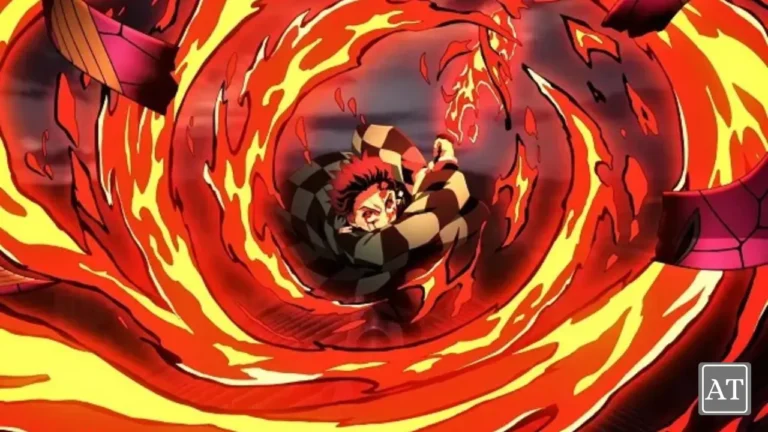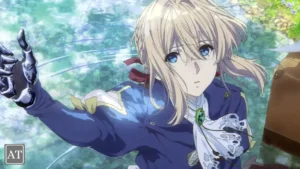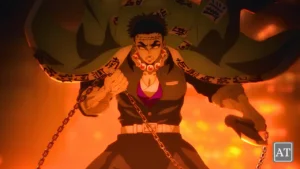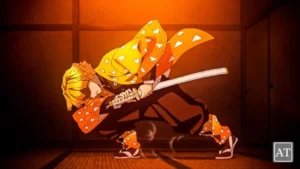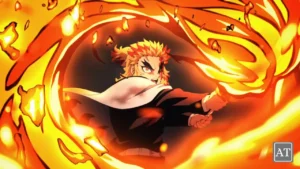Let’s be honest—plenty of anime shows explosive moves, but only a few make us feel the fire. Sun Breathing is one of them. Why? Because its power starts with something we all do about 20,000 times a day: breathing. So while Tanjiro slices demons, we’re reminded that one slow inhale can steady shaky hands before a math test, a job interview, or even a tough apology.
Have you ever noticed your shoulders drop after a deep breath? That’s your personal Sun Breathing moment—no flaming dragon required.
Pain point unlocked: “I love the show, but does it matter in my everyday life?”
Answer: Yes. The story behind Sun Breathing is really the story of using breath to turn fear into courage.
Origin Story: From Yoriichi’s Quiet Heartbeat to Tanjiro’s Fiery Resolve
Long before Demon Corps uniforms and roaring trains, there was a gentle boy named Yoriichi Tsugikuni. Legend says he watched the sunrise every morning, listening to the hush between bird songs. Those silent beats taught him rhythm, and rhythm birthed sword strokes so elegant they looked like a ribbon of light wrapping the battlefield. People later named the dance Hinokami Kagura—“the Fire God’s Dance.”
Fast-forward centuries. Tanjiro Kamado’s father performs that same dance on cold winter nights to honor the new year. No grand stage, just a snow-dusted yard and flickering lanterns. That memory becomes Tanjiro’s lifeline when a Lower Moon demon almost ends everything on Mugen Train. One breath, one remembered step from Dad, and—boom—water becomes flame.
Isn’t that how memories work for us too? A lullaby from Mom suddenly makes a grown-up commute bearable. A coach’s old pep talk pushes us through finals week. History lives in our lungs.
Every Form of Sun Breathing Broken Down
(Each form packs a sword technique and a mini life lesson you can pocket for later.)
Form 1 – Dance (Enbu)
A simple vertical slash that starts it all.
Life Lesson: Begin, even if it’s messy. The first word on a blank page matters more than perfection.
Form 2 – Clear Blue Sky (Hekireki Issen)
A full 360-degree spin, blade flashing like a halo.
Life Lesson: See the whole picture. Problems shrink when you look around, not just ahead.
Form 3 – Raging Sun (Rekka)
Twin circular slashes that trap the enemy in heat.
Life Lesson: Pair passion with structure. Your excitement needs rails or it burns out.
Form 4 – Burning Bones, Summer Sun (Shakunetsu Kekkotsu)
An upward flaming crescent—like throwing confetti of sparks.
Life Lesson: Rise even when tired. Think of early-morning joggers; they’re not less sleepy, just more committed.
Form 5 – Setting Sun Transformation (Jōka)
A reverse-spin counterattack, turning enemy force against itself.
Life Lesson: Turn setbacks into pivots. Fail an exam? Use the feedback, level up.
Form 6 – Solar Heat Haze (Hirin Kagerō)
Creates a mirage that confuses foes.
Life Lesson: Sometimes quiet stillness is your strongest move. Step back, let noise tire itself out.
Form 7 – Beneficent Radiance (Kiki Kyōshin)
A defensive blaze that shields like sunrise behind a mountain.
Life Lesson: Kindness can be armor. Polite boundaries protect healthier than anger.
Form 8 – Sunflower Thrust (Yōtan Shō)
A piercing lunge, straight and honest.
Life Lesson: Face tasks head-on. No more sideways scrolling—just do the thing.
Form 9 – Dragon Sun Halo Head Dance (Nichiun Ryū Kagura)
Swirling arcs that look like a dragon chasing its tail.
Life Lesson: Momentum builds motivation. Tiny wins spiral into big successes.
Form 10 – Fire Wheel (Kasha)
A mid-air roll followed by a slash.
Life Lesson: Adapt mid-flight. Plans change—stay flexible.
Form 11 – Fake Rainbow (Niji)
A rapid side-step leaving an after-image.
Life Lesson: Rest is not quitting. Pausing can trick burnout before it bites.
Form 12 – Flame Dance (Enbu Kurenai)
Twin vertical slices—one offensive, one defensive.
Life Lesson: Balance hustle and health. Work hard, but hydrate, friend.
Form 13 – Continuous Sun (Unnamed Loop)
Yoriichi’s masterpiece: forms 1–12 chained into a never-ending circle.
Life Lesson: Growth is cyclical. Learn → apply → reflect → repeat.
How Sun Breathing Became the Parent of All Styles
The other Hashira arts—Water, Flame, Wind, Stone, Thunder—are basically Sun Breathing’s grandkids. Swordsmen saw Yoriichi’s dance, copied what fit their bodies, and tweaked what didn’t. Think of it like remixing a famous recipe: some add extra chili (Flame), others more sea salt (Water). The core flavor? Still sunrise.
“Is Sun Breathing the strongest style?” yes. It’s the blueprint. But here’s the softer truth—the strongest style is the one you practice with heart.
Wrap-Up
One deep breath—that’s all it takes to turn an ordinary moment into your own Hinokami Kagura. Sun Breathing’s 13 forms may dazzle on-screen, but their real power lies in the lessons they whisper: begin boldly, pivot from setbacks, protect with kindness, grow in a constant loop.
So, next time nerves creep in or motivation flickers, inhale with intention and ask yourself, “Which form do I need right now?” Then exhale and act. Your breath is the spark; the blaze that follows is entirely up to you.
FAQs
1. Is Sun Breathing exclusive to Tanjiro and Yoriichi?
Canon says they’re the only two confirmed users, but the series hints others might revive it. In real life, anyone can practice the mindfulness behind it—no Nichirin blade required.
2. How many forms does Sun Breathing really have?
Thirteen. The 13th is a looping sequence of the first twelve, designed to target Muzan’s hearts simultaneously.
3. Why does the dance look different in the anime and manga?
Animation studios add flourish for visual impact. Core movements stay the same, but extra embers keep viewers glued to the screen.
4. Can breathing techniques improve my athletic performance?
Yes! Diaphragmatic breathing increases oxygen flow, which boosts stamina and calm focus—ask any swimmer or singer.
5. What episode should I watch to see Sun Breathing first?
Episode 19 of Season 1: “Hinokami.” Prepare tissues; it’s a fandom-wide tear-jerker.

